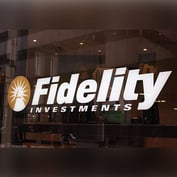What You Need to Know
- They are speculative trading vehicles that usually lose money if held too long, according to ETP experts.
- VIX ETPs are based on futures contracts tracking the Cboe Volatility Index (VIX).
- Morningstar's Ben Johnson says VIX-linked ETPs have destroyed $12.4 billion of capital in nearly 12 years.
One of the best performing assets so far this year have been short-term exchange-traded funds (ETFs) and notes (ETN) based on the Cboe Volatility Index (VIX), which rises when volatility in the S&P 500 index increases.
The index represents the market’s real-time expectations for the relative strength of near-term price changes of the S&P 500 index. The exchange-traded products invest in futures contracts that track the VIX; investors cannot buy the VIX directly.
As the stock market reversed course and traded lower in January, the ProShares VIX Short-Term Futures ETF (VIXY) and the iPath Series B S&P 500 VIX Short-Term Futures ETN from Barclays (VXX) soared, gaining more than 30% through Jan. 27.
Both track the VIX futures, not the spot price of the VIX index, providing exposure to a daily rolling long position in the first and second month S&P 500 VIX futures contracts.
Their longer-term counterparts, the ProShares VIX Mid-Term Futures ETF (VIXM) and iPath B S&P 500 VIX Mid-Term Futures ETN (VXZ), which have exposure to Cboe Volatility Index futures with an average five-month exposure, didn’t fare as well. They gained between 5.3% and 5.9% year to date through Jan. 27. The S&P 500, meanwhile has fallen more than 9%, teetering on the edge of correction territory.
Short- and medium-term ETPs performed especially poorly last year, when the S&P 500 soared almost 27%, but posted gains around 10% in 2020 when stocks swooned early on when the coronavirus pandemic began to spread.
Short- and medium-term VIX ETPs have been on the market for a dozen years, but their total assets today are just $2.5 billion, despite total net inflows of $14.9 billion through Jan. 26, according to Ben Johnson, director of global exchange-traded fund research for Morningstar.
“VIX-linked ETPs have effectively destroyed $12.4 billion in capital during nearly 12 years since they debuted,” he said. “Investors should steer clear.”
The Risks of VIX ETFs and ETNs
Instead of protecting investor assets against losses, VIX-linked ETPs have, overall, added losses to investor portfolios. A primary reason is the fact that these investments don’t invest in the actual VIX index but in a futures contract based on that index.









 January 28, 2022 at 02:12 PM
January 28, 2022 at 02:12 PM











